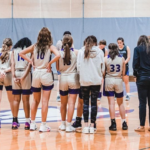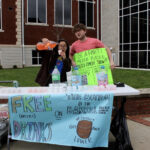I don’t know why I’m writing to you. At this point, I feel like I have run dry with facts, stories, and statistics to try and change your mind, or to at least get an answer to my question: why do you pretend to care about people like me when our survival actually means nothing to you at all?
To you, I acknowledge Type 1 Diabetes is a mere game, the classic Monopoly, if you will. And you should be proud of yourself. I mean, you’re winning. You’ve captured so many properties, now owning 99 percent of the marketplace, so generic competitors don’t stand a chance. The “competition” provides decent cover for your shadow pricing maneuver, raising the stakes every time we turn our heads to another headline. You move across the board slyly, slapping statements on your websites that you help “make life better for people with diabetes,” have “been driving change to defeat diabetes,” and are “at the forefront of the fight against diabetes.”
Some people believe you. Some even took your side, U.S. News reported. They refused to support President Joe Biden’s $1.75 trillion domestic policy proposal that could lower prescription drug costs for older people, cap out-of-pocket Medicare costs at $2,000, and reduce the price of insulin.
But how dare you say that you “make life better” and fight for me and other Type 1 diabetics while we can see the blood on your hands?
Kayla Davis, an Owensboro resident who lived with Type 1 Diabetes until your prices forced her to ration her insulin, died. Alec Smith, a 26-year-old Minnesotan who paid over $1,300 a month for his supplies, died in 2017. Micah Fisher. Meaghan Carter. Antavia Lee Worsham. Josh Wilkerson. Jada Louis. They’re all dead because of you. I listed out these names – these people with families, friends, and lives – for you in November of 2019, yet clearly, it didn’t matter.
We’ve dealt with more critical problems, you argue. That was before COVID-19.
You’re right. It was before the pandemic, but that does not eliminate the value of their lives. And because you didn’t take action then, and refuse to take action now, thousands of others face your death penalty.
The American Diabetes Association (ADA) reported in Sept. 2021 that, regarding COVID-19, the “risk of severe morbidity and mortality is 100–250 percent higher among people with diabetes than those without, even after adjustment for sociodemographic factors and comorbid conditions.”
The association’s research also shows the unemployment rate is higher for people with diabetes than the general public. Also, a quarter of people with diabetes are taking less than their prescribed dose of insulin to save money.
“The costs continue to go higher and higher,” CEO Tracey Brown told WFYI, central Indiana’s source for NPR radio and PBS television. “Even if you have insurance, your out-of-pocket costs are still high. And if you don’t have insurance, it’s just not a good scenario.”
This scenario became real for Travis Paulson, a Type 1 diabetic from Eveleth, Minnesota, who rationed insulin during the financial crisis of 2007 to 2008 and in the COVID-19 pandemic. “I traveled around the country working odd jobs to afford insulin and rationed what I had, living a meager existence and working warehouse jobs wherever I could,” he said to Patients For Affordable Drugs Now, a bipartisan national patient organization fighting to lower drug prices.
He eventually went back to Minnesota but started traveling to Canada to buy his insulin and help others do the same — until COVID-19 shut the border down. “I had to turn around and come home empty-handed. That was unsettling because it not only cut me down on insulin, but it cut down on anybody I could assist with insulin,” Paulson said.
The U.S.- Canada border reopened for vaccinated Americans on Aug. 9, but at that point, Paulson recognized a lot of internal damage.
“The unfortunate thing is that all those years of rationing insulin have caused diabetes retinopathy, insulin resistance, and long-term complications that never would have occurred if I had access to affordable insulin,” Paulson said. “My health is what paid the price.”
You, Big Pharma, are the ones who made him pay. He didn’t have any other choice. He told WFYI that when he was a kid, insulin was about $8 a vial. By the time he went to college, it had ranged from $300 to $350 a vial. People with diabetes need 2-3 vials a month, but you already know that, don’t you?
Eli Lilly, in 1996, your Humalog Insulin in a 10mL vial cost $21. Now, on your website, it costs $275. The list price of a 5-pack of 3 mL Humalog U-100 KwikPens (15 mL or 1,500 units) is $530.40.
In 2001, Sanofi, your insulin brand Lantus, cost $35 a vial. Now it’s $283.56. For a 5-pack of 3 mL pens, it’s $425.31.
And Novo Nordisk, also in 2001, your Novolog insulin cost $40 a vial. As of July 2018, it’s $289. Granted, you’ve introduced a generic version since then at $144.68 and a $99 cash card program from Jan. 2020.
But it’s not good enough.
At this point, I do not write on my behalf – though I’ll admit my greatest fear in life is to become one of the statistics thrown at you at board meetings or press conferences, to which you’ll probably shrug and claim that I didn’t know how to play the game and move on without a second thought.
I’m writing because I have friends and family who suffer from this insanity and your selfishness. I remember this summer, my friend and I told four others about what you’re doing. They had no idea, but they do now. And that friend also gifted me supplies while you turned away.
You think you’re slick. You think you have a monopoly on your hands, and for right now, you do. But not forever. Because I may be tired, but I’m never too exhausted to call you out for playing a game you never should’ve been playing in the first place.
Sir Frederick G Banting didn’t create insulin for you to monopolize. It was created for me and the other people in the world like me. We need it to survive. You don’t.






